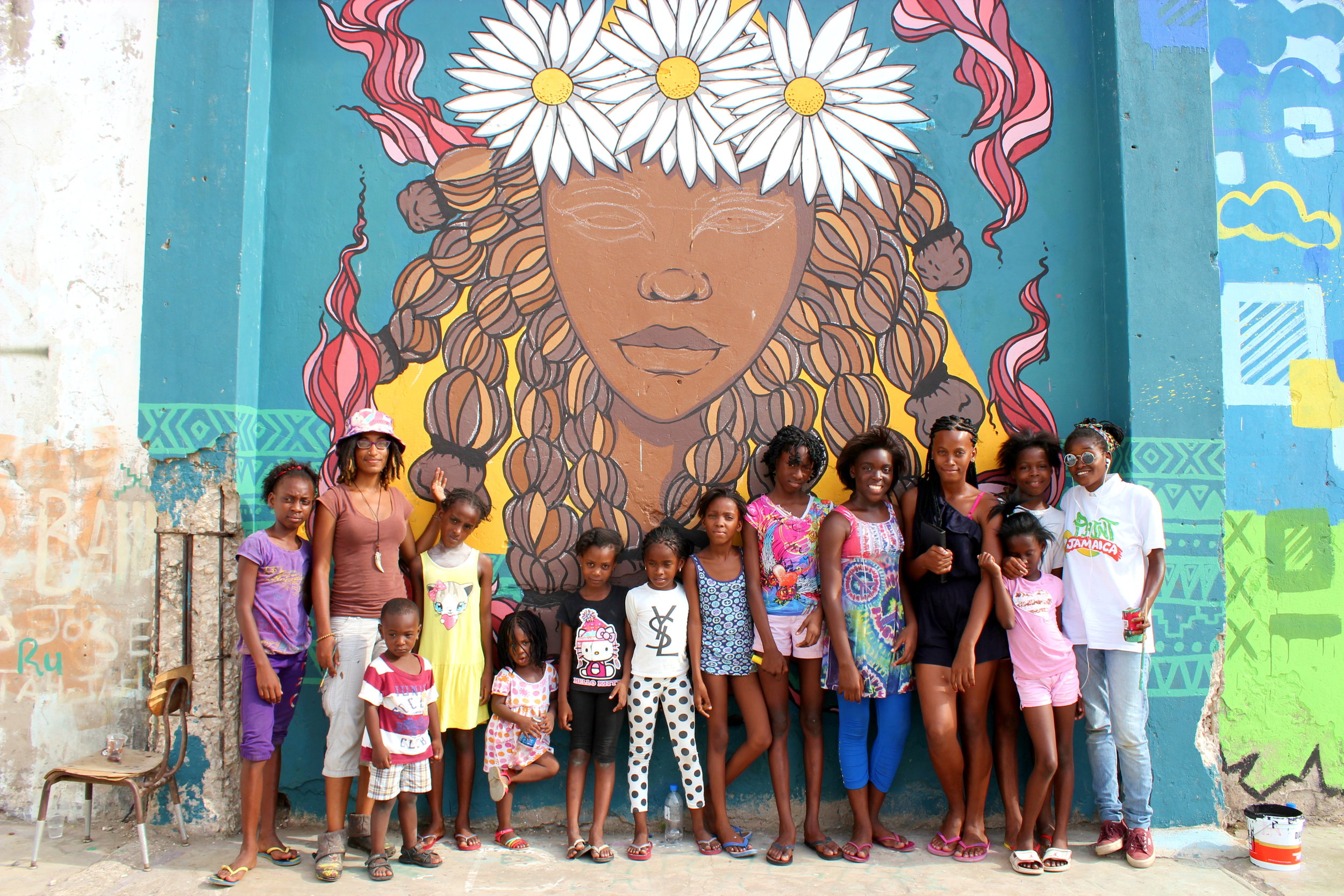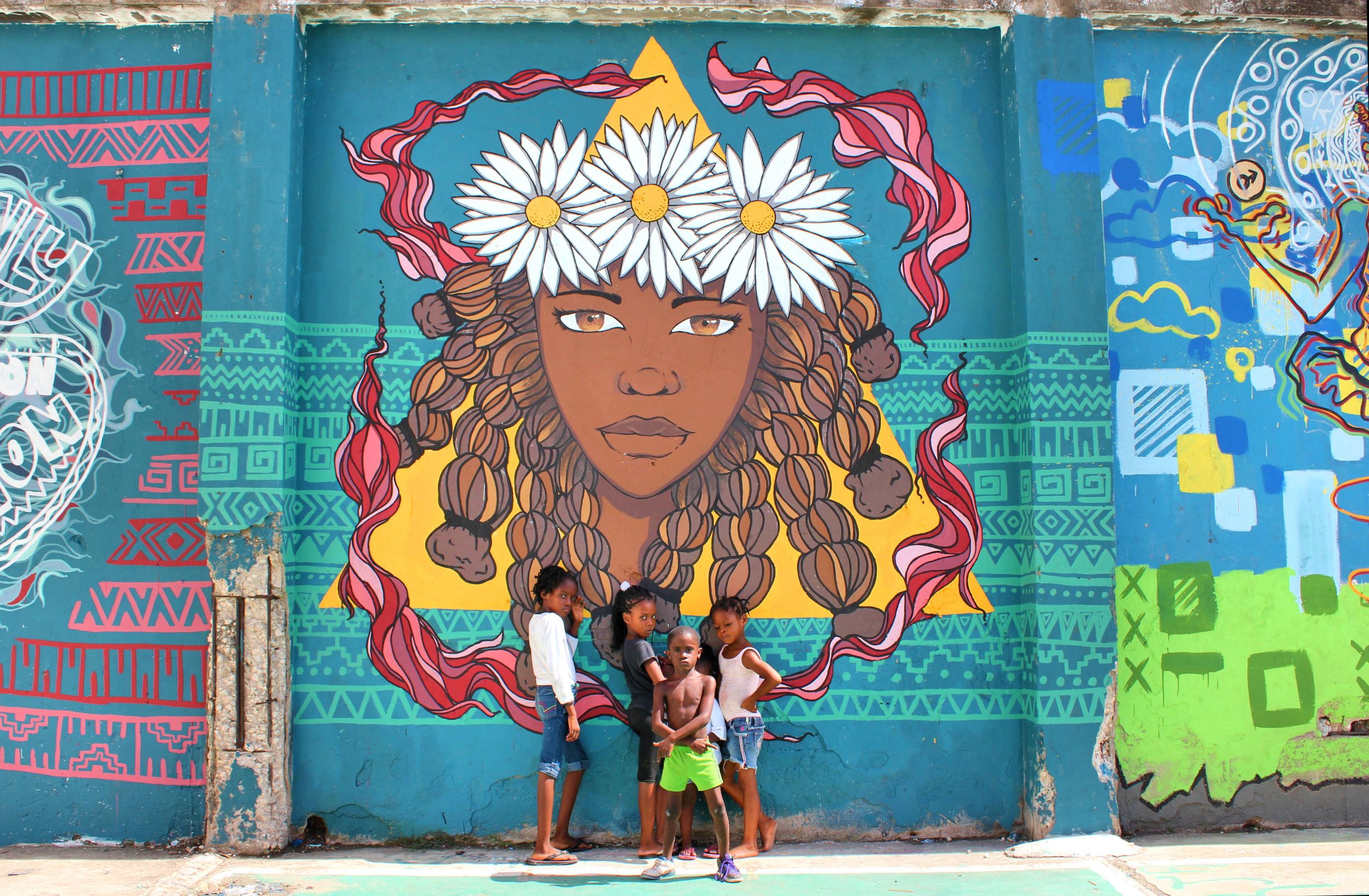Kokab Zohoori-Dossa - Painting Jamaica and Impacting Lives
Kokab Zohoori-Dossa is a creative soul who aspires to make change in the lives of others around her. Through the Paint Jamaica project, started in July 2014, Kokab and a group of other Jamaican artists got together to bring art to the streets of Kingston, with the project focus being 'inspiring people to embellish and transform their visual surroundings through democratic art.'
She shares "I’m just a girl who loves art and I’m just trying to make it in a world that isn’t the easiest place to live in especially for a female artist. I’m a feminist who uses art as my medium for the love of it."
Kokab Zohoori-Dossa, 20-something year old, artist and student of Edna Manley College. Her life mantra: I wouldn’t call it a mantra, but it’s something I always aim to live by - treat, love, respect and accept others how you would want to be treated, loved, respected and accepted.”
Your most memorable moment being integrally involved in the project
I don’t think there’s a specific moment exactly. The whole project, every day we were there, was all very surreal and awesome. From seeing the children’s behaviors and attitudes change, to hearing comments from adults and other youth in the community.
The most amazing thing though was looking back at the pictures from before we started till now. Everything, the environment, the people, seemed more vibrant and alive and it just hit me how much we had touched this place and these people.
What inspired you to join the Paint Jamaica project?
As an artist and as someone who is very into street art and how art can help and connect with people, the moment Marianna (creative genius behind the Paint Jamaica) started telling me about the project, I knew I wanted to be a part of it. We live in a country with a culture that is largely based off negative stereotypes that have been placed on us, especially when it comes to the inner cities. We’ve seen what street art and mural projects have done in other countries, and we asked, “Why not here?” We have more than enough talent!
You are one of the few female artists on the project, how empowering has that been for you?
Wow, I won’t even lie, I've had to deal with some major self-esteem issues, especially being among all the talented and strong men that were a part of this project. What did they need me for? But I’m lucky enough to call these guys my family and they helped me get over my fear of being inadequate, pushing me out of my comfort zone -- and kicking my ass if they needed to.
Marianna was especially an inspiration to me, not only in her words, but also in her actions. She’s a pretty bad-ass woman herself! She was constantly telling me how great it is that we have a female artist on the team and how special my input would be. And to be honest I couldn’t fully believe her until I saw it for myself. Seeing and hearing the things other people were saying about my artwork really helped me a lot. I felt like I could stand up with the big boys as my own person and not feel any less because I’m a woman. But what really hit home was seeing the impact my work had on the little girls in the community. No amount of words of encouragement could compare to that. Of course, I still have a long way to go when it comes to my confidence issues, but Paint Jamaica certainly was the most empowering thing I’ve ever been a part of.
“What really hit home was seeing the impact my work had on the little girls in the community. No amount of words of encouragement could compare to that.”
You recently shared an empowering story about one of your greatest interests in the project - which is to inspire young girls and women to love and embrace themselves as they are. Share more about how this has motivated you to continuing your work with Paint Jamaica.
Growing up in Jamaica, I, just like every other girl that calls this island her home, have been bombarded by a Eurocentric beauty standard. From bleaching our skin to relaxing our hair, everything and everyone around us is telling us we have to change ourselves to be pretty. I always hated it. Speaking to the girls and women in the community and hearing what they had to say, even just observing them, made me realize that many of them believed, in some respect, that they weren’t good enough because of how they looked.
“It broke my heart to see these gorgeous little black girls talk about their skin or hair as if they were things to be ashamed of and altered. I realized I wanted to speak directly to them with my art and I did just that.”
“There are not enough strong, natural, black women depicted in art ... or in anything for that matter. I want to change that. ”
Many of the people in the community started calling my “girls” queens and princesses. These girls thought the girls in the murals were pretty and went on to realize that they were too. There was no greater joy or better motivation.
What are some of the outcomes you hope to see from this project?
Overall, I hope more people will realize the power that art has to change people’s lives. The people in the community are so talented and full of life and being a part of this project helped me and others realize that. It is my hope that these people will see these things in themselves.
Too many people aren’t given the opportunities they deserve because of where they live or how they were brought up, but I hope by bringing attention to these spaces through art more avenues will open up for the people living there. It’s time to change the stereotype.
You are currently pursuing the arts in university, why the arts? Especially as a non-traditional area?
Because it’s what I love. I don’t think anyone goes into the arts if they don’t truly love it, and if they do, then they’re doing it for the wrong reasons. There were so many options and so many people steering me in other directions, but nothing felt right except for art. I could have done something else if I cared about the money. That doesn’t mean I don’t intend to make any though, because that’s certainly a must if I want to survive in Jamaica, but at the end of the day, I don’t think I could be doing anything else. I’m not about the office life at all.
The greatest lesson you have learned from the Paint Jamaica project?
People are much more powerful than we think, especially when we’re working towards positive action and change. So many awesome people came together to make this project a reality, from the Paint Jamaica team to the amazing members of the community. And we did it without waiting for the government to drop anything into our laps. We can take up the responsibility to change the things we don’t like and make an impact. It just takes time and effort and a ton of paint.
How do you hope this project impact the life of young girls and women in the communities?
I hope that every time they see what’s painted on those walls that they see themselves and that they realize that they can be protagonists of their own story and that they’re beautiful just as they are. Self-esteem is already scarce amongst girls and young women. We don’t need things telling us how to change. That just makes it worse. We need something telling us that it’s okay to accept ourselves as we are.
So much has already happened since the inception of the project and it can only grow. I hope these girls will grow up and tell other little girls about how they were inspired by the faces they saw on those walls and begin a chain of self-acceptance and appreciation for their natural beauty.
We were honoured to have featured Kobab (especially for the fact that she's the only female artist on the project) and the Paint Jamaica project, we have been truly inspired. Support the cause and open your walls. Paint Jamaica is the social and art intervention set to transform Jamaica's isual surrounding through democratic art and uplifting messages.
image credit: Jik Photography and Kareen Weir









